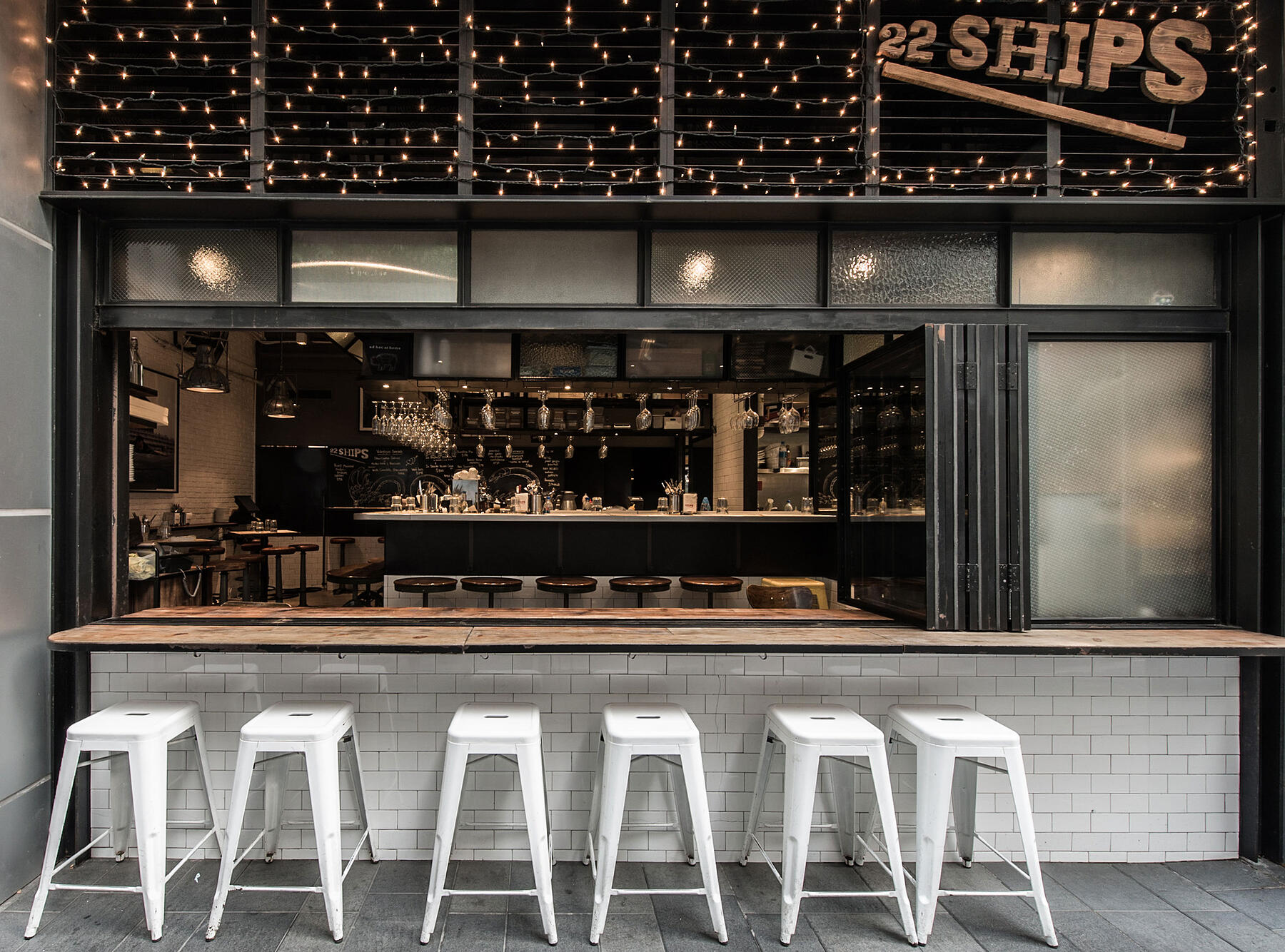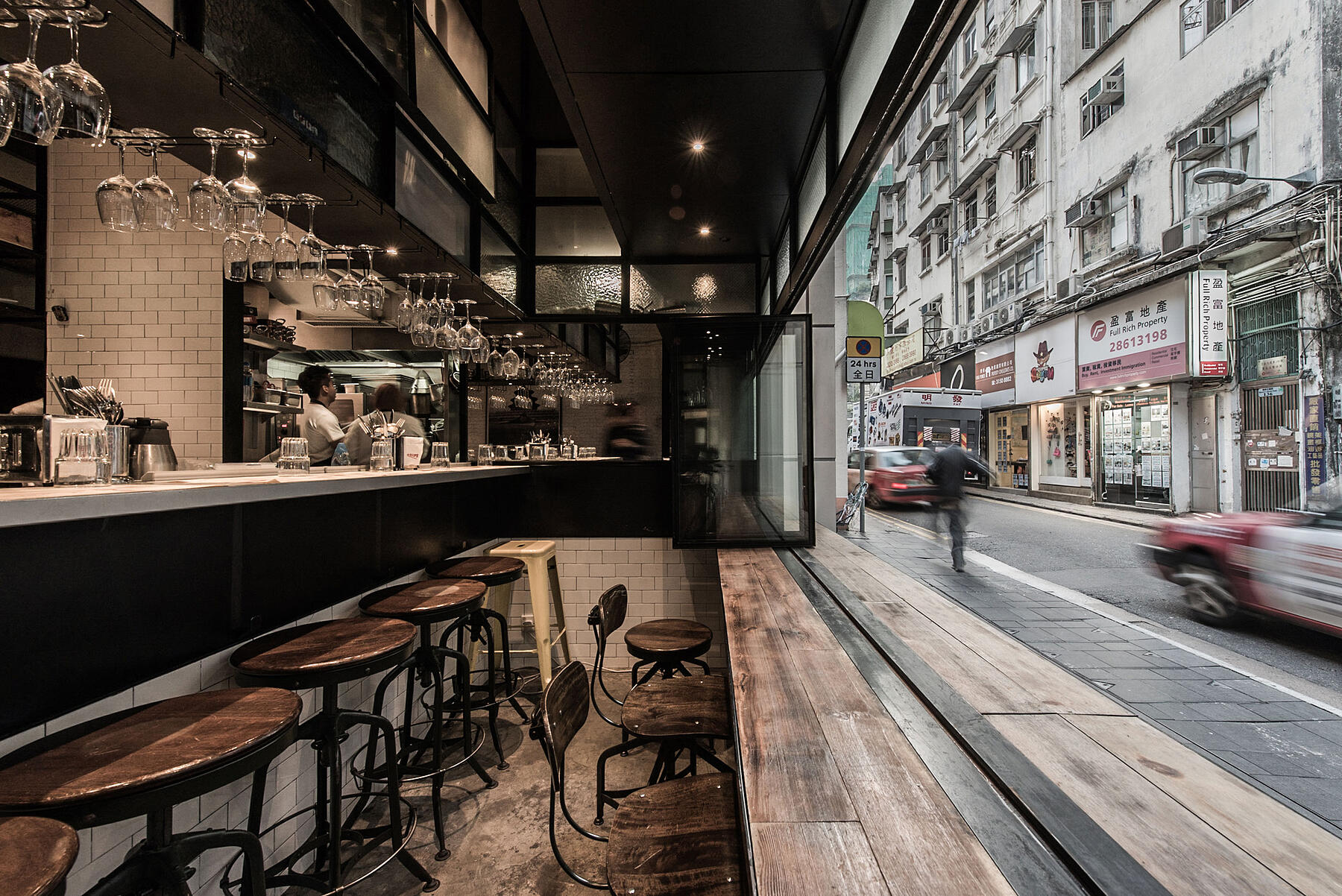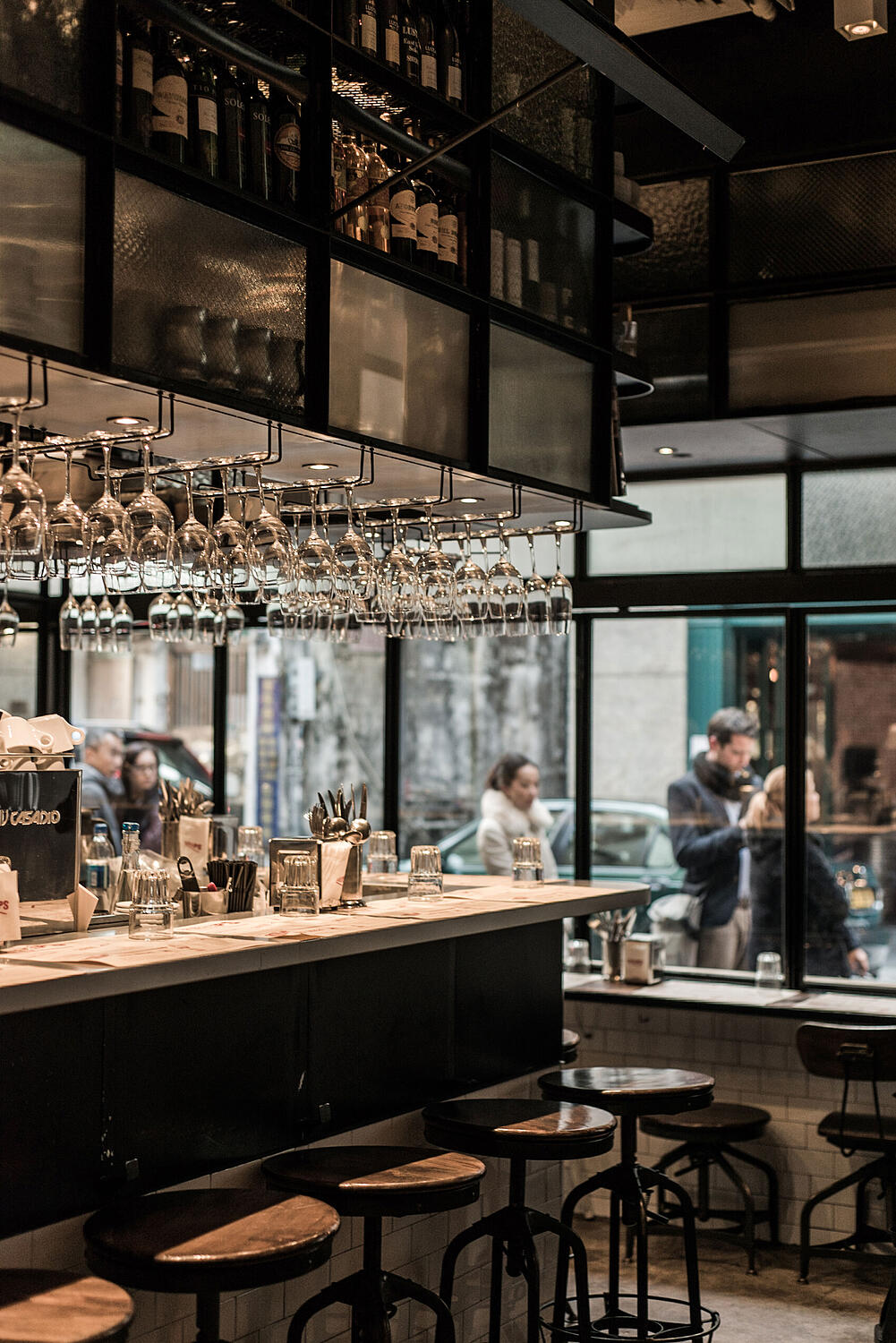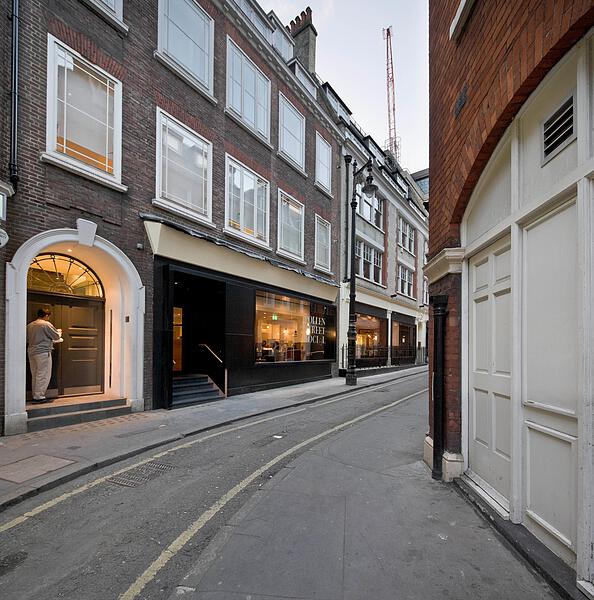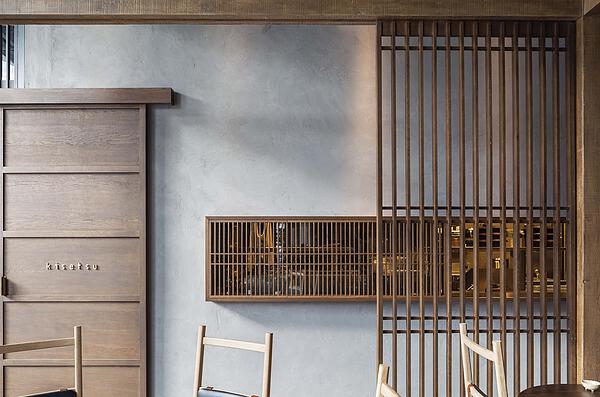22 Ships
Situated on a small alley way in Wanchai, Neri&Hu Design and Research Office was commissioned to design a small Tapas bar concept by Jason Atherton, called 22 Ships.
To reflect the vitality and the diversity of area which is often described as the cultural and industrial heart of the city, Neri&Hu introduces a collage of different layers of materials into this small tapas dining destination. Deeply rooted in Spanish culture and typical of tapas bar typology, the space is also designed to encourage conversation and for customers to move around while eating.
The Wanchai neighbourhood are not only referenced in the materiality with the sturdy black steel frames, the natural steel surfaces, the various textured and colored glass and the recycled wood leaners, but also in the intricate metal details of the door handles, the window joints, the mobile canopy system, the custom-designed mirrors made from factory lamp arms in the restrooms, and the delicate bag and coat hangers around the bar.
The cultural and industrial heritage of this area are not only reflected in the materiality but also in the existing exposed brick wall stripped back to its existing condition to create a contrast between the old and the new.
The architectural idea is boldly expressed on the façade: three datum lines of tile, glass and textured glass in case in metal, wraps the space from the exterior to the interior. The changing of material marks the simple yet essential concept of the restaurant which is sitting/eating, viewing and storing.
The white tile wall wraps consistently into the interior, with bar seating arranged all the way along the wall, creating an intimate yet social communal environment for seating and eating. The glass datum line, while keeping the same idea of viewing, takes on a few different personalities. Depending on the particular interior condition, the glass datum line changes from the bi-folding window at the façade, to mirror along the existing back wall, all to provide the diners a view out, whether it is the bustling life of the Hong Kong street in front, or the peculiar view of the restaurant scene behind.
The textured glass aggressively extends into the interior, changing from a single layer of façade into a glass shelving system hovering over the bar. Hanging from the ceiling by a metal framing system, the light shines through the textured glass, making this both functional and dramatic feature the center piece of the space.
Through the void in between the shelves and bar, diners glimpse into the cooking process and witness the making of a culinary treat as well as engage with other customers. The variety of different materials, the intricate details and the juxtaposition of old and new bring a fresh and convivial atmosphere to the metropolitan culinary scene.
